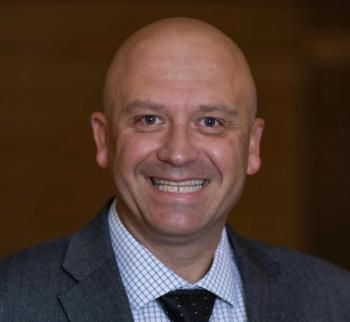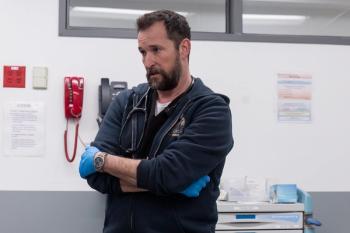
Patients with disabilities are more vulnerable to safety concerns
Health systems need to do more to ensure those with physical or intellectual disabilities are getting the best care. Marcus Schabacker of ECRI talked about the issue.
Each year, ECRI, a nonprofit organization focused on patient safety, compiles a list of the top threats to patient safety.
The list varies each year, and
Dr. Marcus Schabacker, president and CEO of ECRI, told Chief Healthcare Executive® in a recent interview that the issue of ensuring proper care for those with disabilities deserves more attention from hospitals and healthcare providers.
“Patient safety concerns cannot be addressed if we don't address health inequities,” Schabacker says. “And when we talk about health inequities, a lot of people think immediately of women and race. Very few think about people with disabilities. And that's why we wanted to call it out.”
“People with disabilities have a much higher chance to have adverse events, have complications to their health, and get worse treatment,” Schabacker says.
About one in four Americans have some type of disability, ECRI’s patient safety report notes.
At the same time, clinicians exhibit discomfort in treating patients with disabilities. Only four in 10 doctors (41%) say they are “very confident” in providing the same level of care to patients with disabilities, and only 57% said they strongly believed they welcomed patients with disabilities into their practice, according to a Health Affairs
The U.S. Department of Health & Human Services has issued new measures aimed at preventing discrimination aimed at patients with disabilities. The
Federal law bars providers who receive federal aid from refusing to treat patients with disabilities, but the health department says the new rule offers greater protections. The department also notes the need for protections for patients with telehealth and technology tools supporting patient care decisions, including artificial intelligence. (Check out this
Maria Town, president and CEO of the American Association of People with Disabilities, said the new rule offers critical protections to ensure patients get better care.
“People with disabilities routinely experience discrimination in medical settings, where ableism can be a matter of life and death,” Town said in a statement.
“This rule is going to save and lengthen lives, keep families together and keep people in their communities, and improve access to and quality of medical care disabled people receive,” Town said.
Schabacker points to some factors affecting care for patients with disabilities. Individuals with intellectual disabilities can have more difficulty in communicating with clinicians, he notes.
“They have more difficulties expressing themselves,” Schabacker says. “There are barriers of communication and understanding.”
The ECRI report also notes that patients with disabilities are vulnerable to “diagnostic overshadowing.” Some physicians fall short in caring for those patients because they often assume that their symptoms are related to their disability, rather than a different health condition that merits attention. As Schabacker says, some of the barriers facing patients stem from perception.
Individuals with disabilities suffer more health complications. Adults with disabilities are three times more likely to suffer from heart disease, cancer, diabetes, or stroke, according to the
Some adults with disabilities aren’t having the same access to screening for serious conditions.
Rachel Thornton, vice president and chief health equity officer of Nemours Children’s Health, says it’s critical for health systems to consider the needs of patients with disabilities in terms of health equity.
In a 2022 interview with Chief Healthcare Executive®, Thornton stressed the importance of physicians listening to parents and loved ones of patients with disabilities.
“It’s the thing I say about every parent, and I think it’s exponentially true for parents of special needs. Parents know a lot more about what’s really going on with their children. And when a parent expresses concern or suggests a solution, I know that they’re seeing their child 24/7, and I’m seeing them for 20 minutes,” Thornton said.
Thornton also said patients with disabilities can have overlapping needs, and health systems should play a role in ensuring that they have access to services and additional support.“There are certain groups of children who, when they also have developmental challenges or other sources of special needs, may be particularly at high risk or especially vulnerable to negative outcomes in the community and in healthcare,” Thornton said.
“So we need to be paying attention to these things in concert, looking at socioeconomic barriers and how those especially impact patients with special needs, looking at things like racism and how they manifest in communities, or frankly even sometimes despite our best efforts, in healthcare, and how those intersect with outcomes for children of special needs.”
Health systems and hospitals need to examine the outcomes involving patients with disabilities and see if there are disparities, ECRI recommends. Healthcare organizations also need to be providing education to clinicians in treating patients with disabilities, and those training efforts should also include a focus on reducing unconscious bias.
Schabacker highlighted the importance of training for doctors, saying some physicians don’t have extensive experience in treating patients with disabilities.
In some cases, doctors aren’t showing patients with disabilities respect. The authors of the 2022 Health Affairs article, which surveyed doctors, wrote, “Many physicians expressed explicit bias toward people with disabilities.” The survey found some physicians sent patients to other practices, and some used derisive or dismissive language.
Clinicians also need to make extra effort to ensure patients with disabilities are able to ask questions and understand what they are hearing and guide them in providing informed consent. If those patients aren’t capable of providing informed consent, clinicians need to work with family, loved ones or guardians.
And healthcare providers need to ensure patients with disabilities have equitable access to their facilities, including parking and communication devices. Clinicians should talk with patients, or their families, about any accommodations they might need, and they should be included in the patients’ electronic health records.
Health systems would also be well-served in ensuring individuals with disabilities are included in patient advisory groups.
“People with disabilities …. deserve our attention, our care,” Schabacker says.




























































































